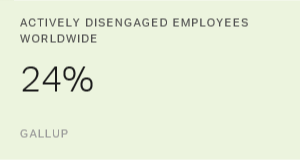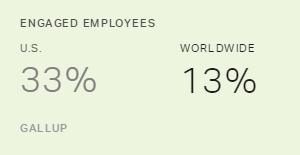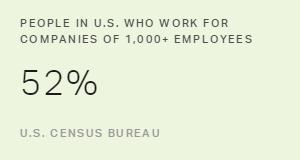Story Highlights
- Poorly motivated workers and teams span the globe
- Companies should encourage managers to ask for help
- Managers need solid plans for improvement, or nothing will change
Managers who don't know how to meet the engagement needs of their team become a barrier to employee, team and company performance.
And a disturbingly high percentage of managers around the world are not meeting the needs of their employees. Actively disengaged employees (24%) outnumber engaged employees (13%) by nearly 2-to-1, according to Gallup -- implying that at the global level, work is more often a source of frustration than fulfillment.
Consistently low engagement can have a negative effect on company success. Teams with low engagement are less productive, less profitable and less likely to be loyal. This lack of loyalty to the company can cause turnover, which can cost businesses approximately 1.5 times the annual salary of every person who quits.
Obviously, the fewer poorly motivated teams and the more engaged teams a business has, the better. Compared with disengaged teams, engaged teams show 24% to 59% less turnover, 10% higher customer ratings, 21% greater profitability, 17% higher productivity, 28% less shrinkage, 70% fewer safety incidents and 41% less absenteeism.
When teams become more engaged, work feels very different for employees. But for that to occur, managers who lack an innate understanding of people management need assistance.
Getting to the Bottom of Engagement Problems
These four steps can help most companies get to the bottom of their engagement issues:
Understand the context. Managers who struggle to meet employees' engagement needs often feel like they are faced with circumstances out of their control -- such as volatile market conditions, limited labor supply or budget cuts.
If a team's engagement suddenly drops, leaders should examine the manager's work environment; conditions may improve with the right interventions. Seeing a job from the manager's perspective can shed light on a team's engagement issues and determine if there are true, systemic barriers facing the team or if the source of disengagement can be locally managed.
Context is always important -- from the first engagement measurement on, leaders need to know why a team is engaged or disengaged. But if survey results show a sudden drop in engagement, leaders should be aware that something in the environment has drastically changed.
Encourage managers to ask for help. Few managers are taught how to engage employees, especially before the company starts measuring engagement. Further, most managers believe they are doing their jobs well and don't see the need for change.
If managers who don't know how to manage people don't understand the effect of their behavior on team engagement, they can't assess their own impact. And if their teams don't have the opportunity to confidentially rate their managers via an employee engagement survey or other means, there's no measurable or meaningful way for managers to evaluate their effectiveness. Managers may even be afraid to ask for help, for fear of appearing weak or ineffectual.
It's better for businesses to encourage managers to get the support they need than for companies to continually suffer from disengagement. That support should go further than merely making managers aware of their engagement results -- managers need a thorough understanding of engagement.
Provide real assistance to managers. Leaving managers to their own devices can create disengaged workplaces. Companies should offer tailored and intensive training, coaching, support and guidance to all managers.
Many companies measure engagement but offer a one-size-fits-all approach to managing it. It's better to provide foundational development in the first year of an engagement initiative and train and coach each manager on specific people-management needs in subsequent years.
Lower-performing managers are going to need tailored strategies and more intensive support. Managers should not be punished for their own lack of training -- and they shouldn't have to figure out how to engage their employees on their own.
Make solid plans for improvement, or nothing will change. Engagement begins at the local level through managers' initiatives, manager-to-manager support and organized classes led by human resources. Managers need to focus on local actions (such as managers committing to obtain the materials and equipment employees are missing) because that's what sparks engagement.
Managers need to talk to their employees to gain a better understanding of what the team lacks. Then, they should follow up on action items and measure engagement improvements. Without measurement and action, no one can tell if things are really getting better.
Annamarie Mann contributed to the writing of this article.




